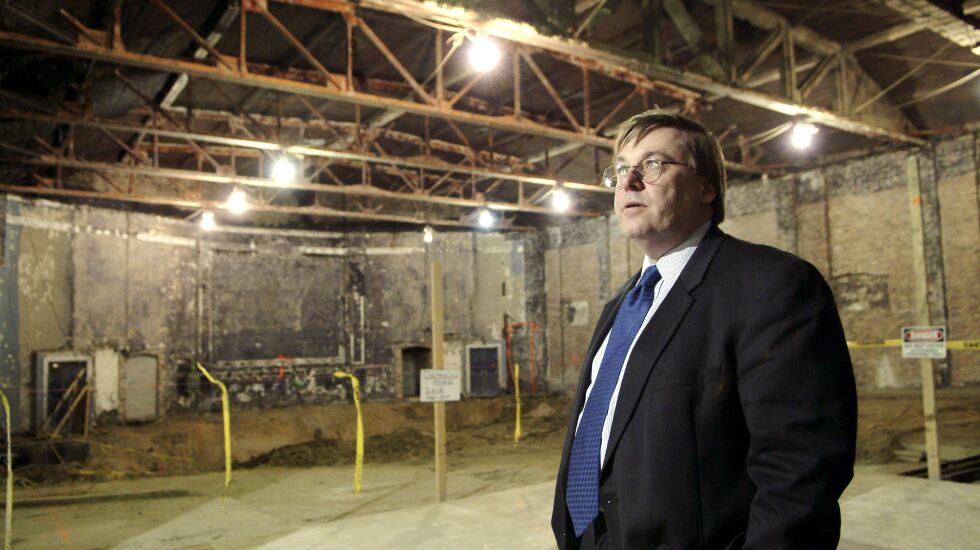
Architect Daniel P. Coffey, a South Side bricklayer’s son who oversaw the restoration of the Chicago Theatre and other venues that formed the core of the downtown theater district, has died.
He was 69.
Raised in the Gage Park neighborhood and later in the south suburb of Matteson, Mr. Coffey founded his architecture firm, Daniel P. Coffey & Associates, in 1984.
Over 20 years after the firm’s founding, Mr. Coffey led many of the restoration projects that contributed to the Loop’s revival in the 1990s and early 2000s.
While his firm was in its infancy, Mr. Coffey in 1985 took on the $10 million restoration of the Chicago Theatre, at 175 N. State St., helping rescue the then-faded movie house from the brink of demolition.
He worked with the edifice’s new owners, the Chicago Theatre Preservation Group, and oversaw the restoration of the building’s brick and terra cotta exterior, its ornate interior and its 3,600-seat auditorium.
The job turned the dilapidated old film palace into a city landmark worthy enough for Frank Sinatra to perform live on the restored theater’s opening night in September 1986.
Mr. Coffey’s downtown theater work includes the restoration of the Nederlander Theatre, at 24 W. Randolph St., in 1996, and the Cadillac Palace Theatre, at 151 W. Randolph St., in 1999.
“He loved this city,” said Mr. Coffey’s wife, Robin.
He struck up an interest in architecture as a child, when his father moved their family to Arizona for six months to find work, his wife said.
“They saw a couple of Frank Lloyd Wright properties out in Arizona … and his mother [later] said the minute he saw this, [Coffey] said, ‘This is what I’m going to do.’”
Mr. Coffey also handled the 1993 renovation that turned the vacated and decaying 11-story Goldblatt’s department store at State and Jackson streets into an academic and administrative center for DePaul University’s Loop campus.

The building, reborn as DePaul Center, “would result in the creation of a new civic institution that could dramatically change the previously blighted and depressed south Loop area of State Street,” Mr. Coffey wrote in a 1995 essay for Construction Dimensions magazine.
“He’s rational but also quite creative,” the late preservationist and architecture maven Seymour Persky said of Mr. Coffey in a 1993 Chicago Reader article. “He’s got this marvelous ability to take beautiful old wine and put it in new retrofitting bottles.”
Mr. Coffey’s wealth of other work included a 1996 dramatic remake of the University of Illinois Chicago campus core that removed the institution’s outdoor amphitheater and the concrete walkways that led to it.
He died Oct. 12 in his Naperville home, his wife said. A 2022 stroke led to a decline in his health. His final completed project was the restoration of the historic Warner Theater in Erie, Pennsylvania. The venue reopened in January 2022.
“We’ll miss him,” said attorney Greg Hummel, board chairman of the Chicago Central Area Committee, the civic group of which Mr. Coffey was once a member. “He had an instinct and cared a lot for the places he worked. He was taken from us much too soon.”
He is also survived by his daughters, Emily and Sarah. A memorial service at his Naperville home and studio has been planned for Nov. 4.
Lee Bey is the Chicago Sun-Times architecture critic and a member of the Editorial Board. He is the author of “Southern Exposure: The Overlooked Architecture of Chicago’s South Side” and is working on a book about West Side architecture.
Send letters to letters@suntimes.com







